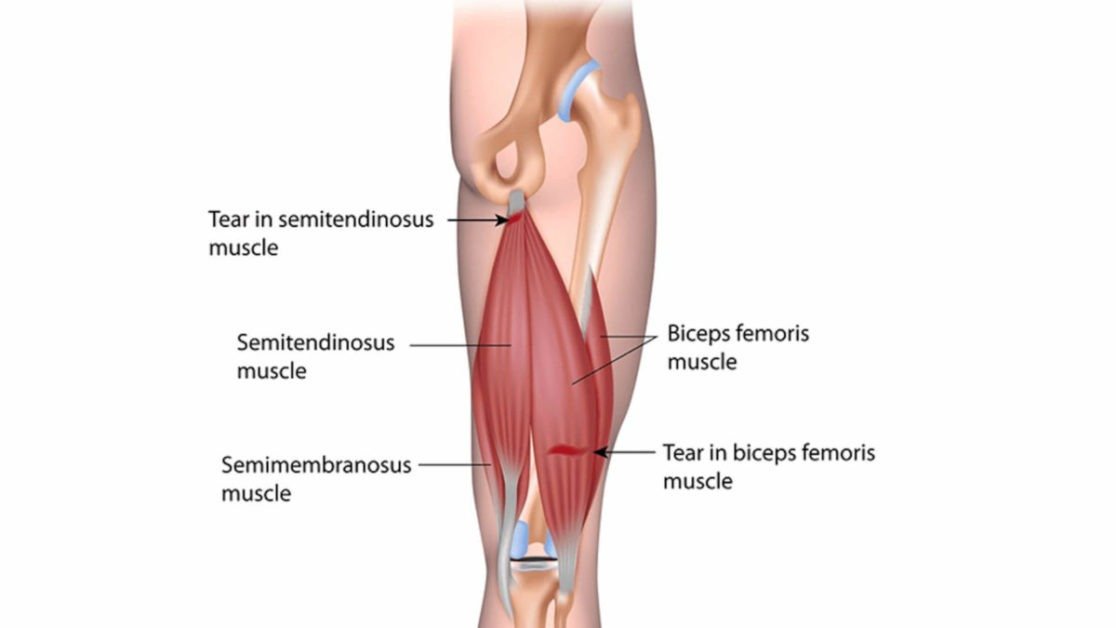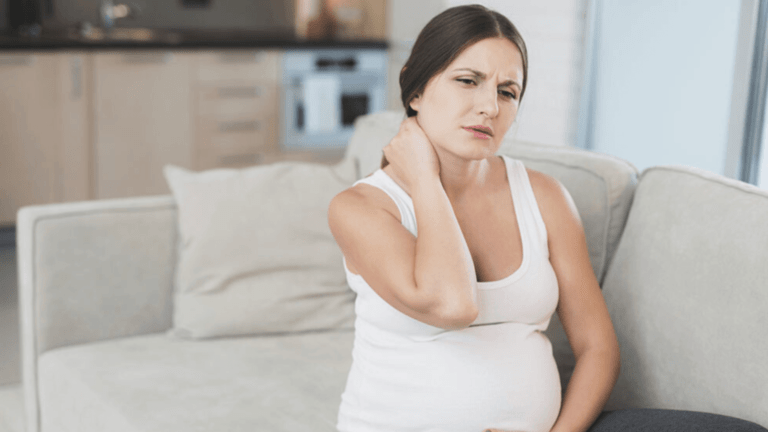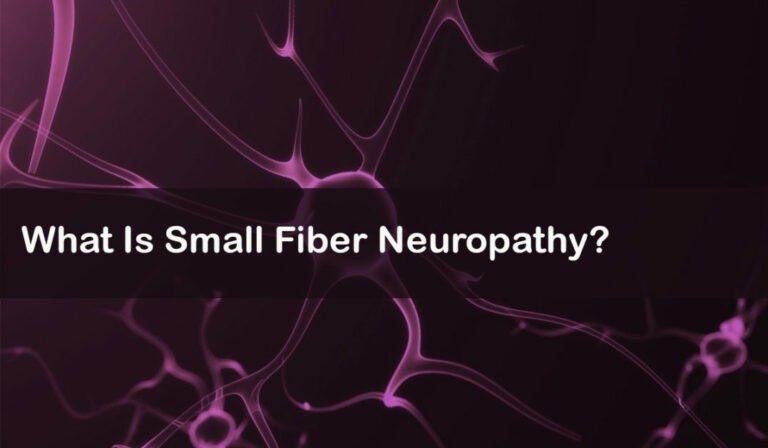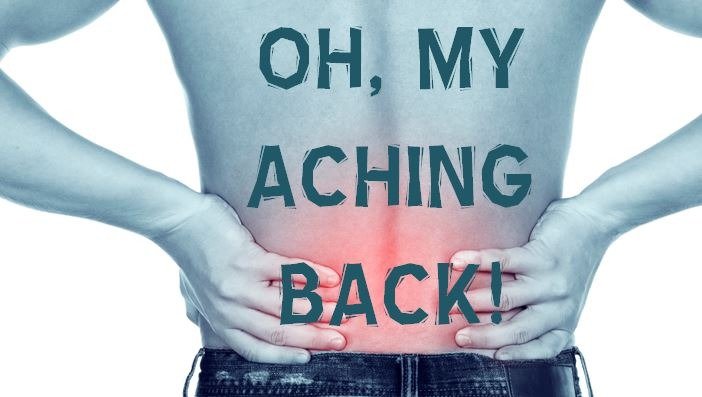How Semitendinosus Pain Can Be Treated? – Causes, Symptoms, And Treatment!

The semitendinosus muscle is located in the back of the thigh. The semitendinosus and its counterpart, the gracilis, are both situated in the medial compartment of the thigh.
Reasons For Semitendinosus Pain
Both muscles are attached to the knee joint by way of the tendon that runs from the lower end of the femur to the tibia. The tendon is also known as the “biceps femoris.” The semitendinosus and gracilis muscles are located behind or underneath the sartorius muscle, which is visible to most observers and is situated in front of them.

The primary function of this muscle is to flex or bend your knee. Flexing your knee involves bringing your heel toward your buttocks and bending forward at your hips.
This action is almost always accompanied by hip extension, that is, bringing your butt backward while keeping your knees straight; this combination allows you to stand upright with locked knees. However, during running, when you need to “push off” with each stride, you extend (straighten) both knees and hips at once. While running or walking, this muscle also helps stabilize your kneecap in a bent position so that it doesn’t slide down too far on a slippery surface.
Massage therapists may be asked to target several areas with regard to these muscles, including not only the tendon behind or underneath the knee but also the belly or proximal region of each muscle.
It is believed that when one of these two muscles becomes tight or strained, it can pull on its attachment at the knee joint causing pain in other parts of the leg, including but not limited to above or below it. As with any massaging technique, massage therapists should always ask for permission before working on any soft-tissue area.
Causes of semitendinosus pain
The causes are:
1. Muscle tears
Muscle tears are caused by overuse, repetitive movements, or strains on the muscle. These types of injuries happen due to overtraining, improper technique, and lack of flexibility. If you have any type of injury to your hamstring, make sure to rest it properly and avoid further strain.
2. Bursitis
Bursitis is inflammation of the bursa sac, a fluid-filled pocket at the end of bones. When the bursa becomes inflamed, it swells and produces pain. Most often, bursitis occurs when a tendon rubs against bone causing friction and irritation. There are many different types of bursitis, including tennis elbow, golfer’s elbow, and shoulder bursitis.
3. Tendinitis
Tendonitis refers to inflammation of tendons. Commonly, tendinitis happens after strenuous exercise or sporting activities. Overuse of the muscles can cause them to become tight and stiff. Stretching exercises can help prevent these types of injuries.
4. Sprain
Sprains occur when ligaments tear away from their attachment points to the bone. Ligaments connect muscle groups to bone and allow us to move our joints. A sprain can occur if the ligament is stretched beyond its limits. You may experience pain and swelling when you injure a ligament. Afterward, you should use ice packs to reduce swelling and stiffness.
5. Straining
Straining means that you are exerting too much force on your body. Your body naturally tries to protect you from overexertion. As soon as you feel pain, stop what you’re doing immediately. Rest until the pain goes away. If you continue to strain yourself, you could suffer from chronic pain.
Symptoms of semitendinosus pain
The symptoms are:
1. Aching muscles
When you have a muscle injury, you may feel pain and tightness throughout the affected area. If the pain persists, then you should seek medical attention. You might experience sharp pains that radiate down your leg. Your doctor may prescribe anti-inflammatory medications, physical therapy, and/or rest.
2. Swelling
If you notice swelling around your knee joint, then you need to visit your physician immediately. When you have swollen knees, they may become painful and stiff. You may also have difficulty walking due to the discomfort.
3. Difficulty moving your foot
You may feel stiffness and soreness in your lower thigh after having a strain. You may notice that your ankle is unable to move freely. You may even experience numbness in your toes.
4. Painful movement
The pain associated with semitendinosus injury may travel along your hamstring muscle. Running and jumping may cause pain.
5. Tenderness
Tenderness in your quadricep muscles means that you have strained your muscular tissue. In addition, you may feel tenderness in your calf. Additionally, you can have very painful muscle spasms.
Treatment options for semitendinosus pain
Semitendinosus pain is a condition that affects the knee joint and causes severe knee pain. There are many treatments available for this condition, including over-the-counter medication, physical therapy, and surgery.
However, not all patients have access to these treatment methods. Fortunately, there are several natural remedies that may help alleviate the symptoms of semitendinosus tendinitis. Here are five effective home remedies for semitendinosus Pain.
1. Ice Therapy
Ice therapy is a simple way to relieve pain caused by inflammation. If you’re suffering from semitendinosus tendonitis, ice packs can provide relief and reduce swelling. Simply wrap an ice pack around your knee and leave it on for 20 minutes at a time. You should repeat this procedure two to three times daily until your pain subsides.
2. Hot Compresses
Hot compresses are also great for reducing inflammation and relieving pain. Wrap hot water bottles or heating pads around your affected knee and leave them on for 10 to 15 minutes at a time. Repeat this procedure twice daily until your pain subsided.
3. Acupuncture
Acupuncture is an ancient Chinese medicine technique that involves inserting needles into various points on the body. Studies show that acupuncture can help reduce pain and increase blood flow to the area. To get started, find a trained acupuncturist who specializes in sports injuries. He or she will use point injections to stimulate the muscles and joints surrounding your knee.
4. Stretching Exercises
Stretching exercises are excellent ways to stretch out tight muscles and improve circulation. Try doing some gentle stretching exercises to ease tension and relax sore muscles. Start with stretches that target your hamstrings and quadricep muscles. Perform each exercise for 30 seconds before moving on to the next one.
5. Massage Therapy
Massage therapy helps loosen tight muscles and promote relaxation. A massage therapist can perform deep tissue massages to help release muscle tension and improve circulation. While you’re recovering from semitendinosus Tendinitis, consider scheduling a regular massage therapy appointment.
Each of these remedies requires some patience and persistence, but they can work wonders. Try them out, one by one, until you find the treatment that relieves your pain.
Dr. Edward Zelman
Dr. Edward Zelman is a distinguished and highly respected medical professional who has dedicated his career to the field of general medicine. With a profound commitment to patient care and a wealth of knowledge acquired over decades of practice, Dr. Zelman has earned a reputation as a trusted healthcare provider in his community. With a career defined by excellence and an unwavering commitment to the betterment of his patients and the broader community, Dr. Edward Zelman stands as a pillar of the medical field, dedicated to the principles of healing and compassionate care. At present, Dr. Edward Zelman is researching safe and effective natural remedies that can restore as well as maintain the youthful functioning of the body.
View All By Dr. Edward






